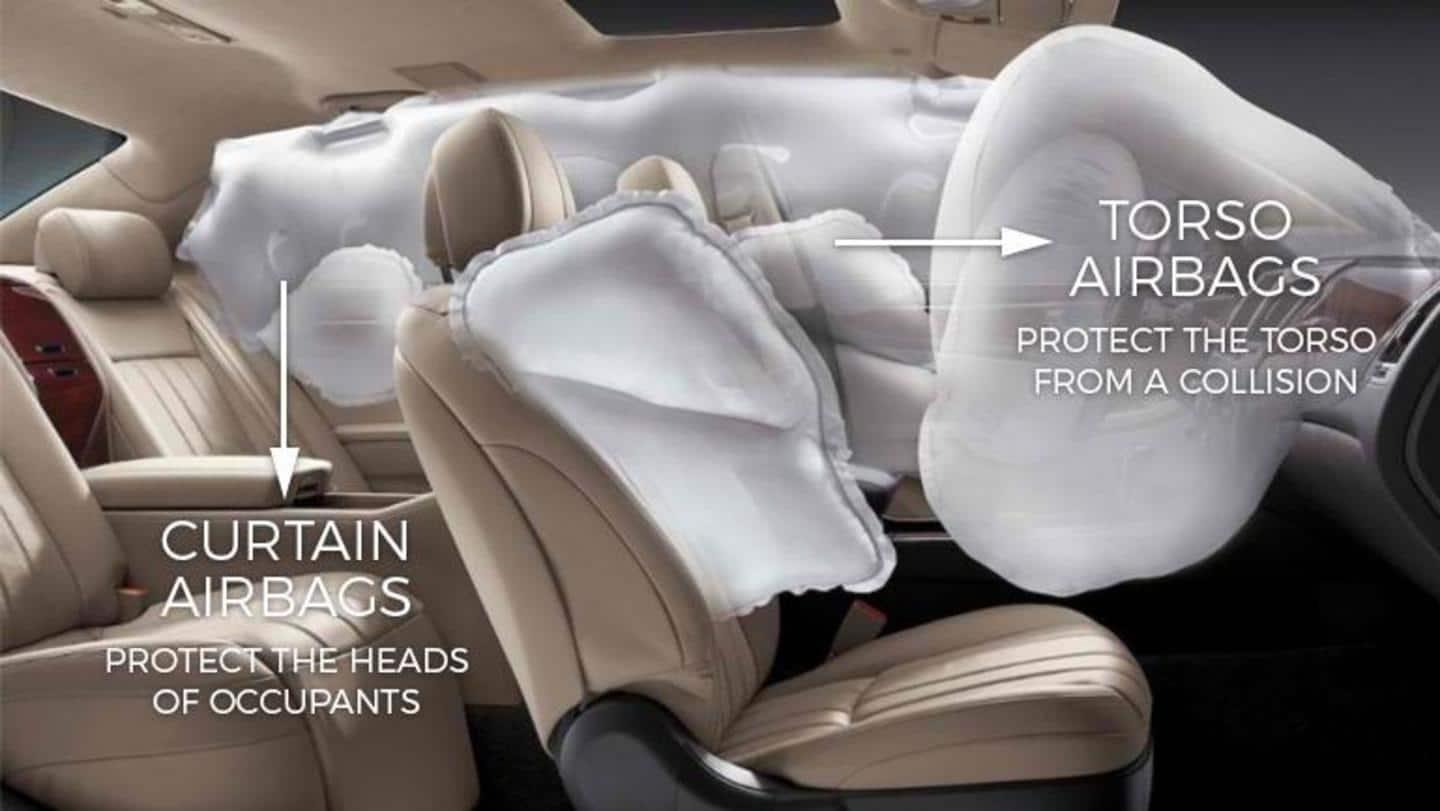(MENAFN- NewsBytes) Airbags are one of the most commonplace yet vital safety features seen in four-wheelers. In case of a collision, these inflatable gas-filled bags reduce the forces experienced by the vehicle's occupants by serving as a cushion. They are also known as Supplementary Restraint Systems (SRS) since they supplement other safety equipment like seatbelts at the time of crash. Here's a detailed guide to airbags.
Materials and parts What are airbags made of?
An airbag system comprises five components, namely crash sensors, indicator lamps, airbag module, steering wheel connecting coil, and diagnostic monitoring unit. The airbag module further consists of three parts: airbags made of nylon, an inflator body, and a propellant (mostly sodium azide combined with an oxidizer). At the time of vehicular assembly, the airbag module is packed with other components.
Variety What types of airbags are available?

Frontal airbags protect the head and chest of front-seat occupants during a head-on collision, while seat-mounted torso airbags offer torso protection during a side impact. Curtain airbags safeguard passengers from side impacts/T-bone crashes and knee airbags aim to protect the knees and shins of the occupants. Finally, rear seatbelts with embedded airbags reduce the possibility of head and chest injuries.
Information 2021 Mercedes-Benz S-Class has the world's first rear frontal airbag
The rear frontal airbag was first introduced in the 2021 Mercedes-Benz S-Class . It deploys from the backside of the front seat and has a tubular structure. Its aim is to protect the rear-seat occupants from head and chest injuries.
Method How do airbags work?
Airbags are packed in a deflated state in various parts of the cabin and are activated in case of a collision (when the speed falls drastically and passengers experience a high level of G-forces). An Airbag Control Module (ACM) monitors these forces via sensors. In case of a sudden change, the ACM decides which airbag to deploy to ensure the safety of the occupants.
Process Airbags take roughly 50 milliseconds to be deployed

In case of a collision, the ACM sends an electric spark to the inflator canister, which packs the solid propellant, setting off a chemical reaction that produces nitrogen gas. The gas expands, inflating the airbag and protecting the driver/passenger. This procedure takes only 50 milliseconds to complete and the airbag can get triggered in a collision equivalent to hitting a solid barrier at 14.5km/h.
Warning But airbags are not fail-safe
Though airbags are a lifesaver, structural faults may cause disastrous consequences. In the Takata airbag recall (2018 and onwards), nearly 100 million vehicles globally were recalled due to faulty inflators. The company said that the inflators can either have too much or too little moisture within the propellant, which can cause the inflator to either deploy too slowly or burn aggressively to cause rupture.
MENAFN25102021000165011035ID1103042256
Legal Disclaimer:
MENAFN provides the information “as is” without warranty of any kind. We do not accept any responsibility or liability for the accuracy, content, images, videos, licenses, completeness, legality, or reliability of the information contained in this article. If you have any complaints or copyright issues related to this article, kindly contact the provider above.